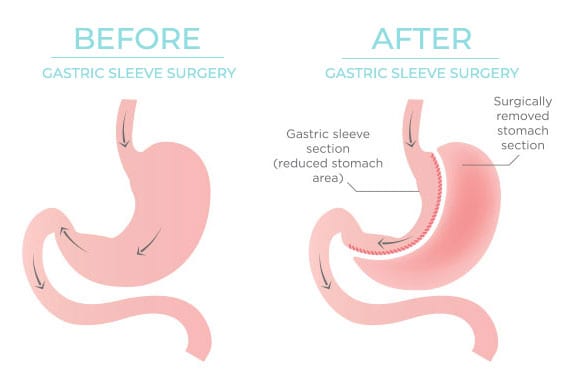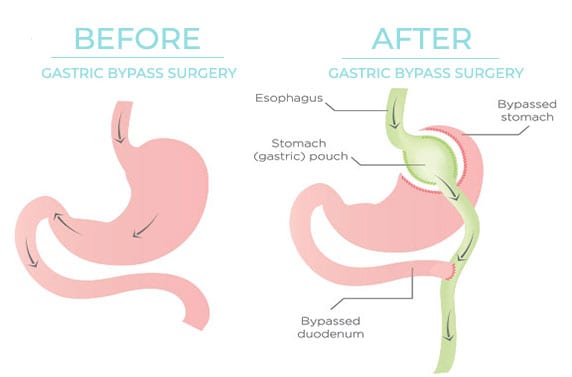Bariatric Surgery

WEIGHT LOSS WITH BARIATRIC SURGERY
Bariatric surgery procedures are designed for people who suffer from obesity.
The size of the stomach is reduced either with a gastric band, or with the removal of a small portion of the stomach, or by resecting and re-routing the small intestine to a small stomach pouch. With these methods results for sustainable weight loss can be achieved.
In partnership with Dr. Victor Dib’s Institute of Bariatric Surgery in Brazil, Dr. Lamblet and Dr. Dib provide a variety of bariatric surgery procedures for weight loss, which use the latest technologies and safest procedures, according to international standards.
Request a consultationTypes of Bariatric Surgery Procedures
Gastric sleeve SURGERY
Weight Loss Procedure
Gastric sleeve is the most performed bariatric procedure in the United States. It is a video-laparoscopic surgical procedure that consists of longitudinal stapling of the stomach, where about 80% of the stomach is extracted, reducing its storage capacity to 150 to 250 millilitres. This procedure does not involve intestinal rerouting or malabsorption unless followed by Roux-en-Y gastric bypass, and it only uses your own body’s natural tissues.
This technique does not alter the anatomy of the bowel, thereby preserving more absorption of food. There is also alteration of the gastro-enteric endocrine axis and intestinal microbiota, which contribute to weight loss and metabolic control.
The patient will feel less hungry and consequently the food intake will be lower. Estimated weight loss is 30 to 35% of weight one year after surgery. There is a worldwide growing trend, indicating this method as one of the most popular.

GASTRIC SLEEVE PROCEDURES
Before and After Surgery
Gastric BYPASS SURGERY
Weight Loss Procedure
The Gastric Bypass surgery is the most widely practiced bariatric technique in the world due to its safety and, especially, its effectiveness being performed by video-laparoscopy.
In this technique, surgical stapling is performed in the stomach and a gastric reservoir of about 30 ml is constructed. The rest of the stomach and part of the intestines are diverted and excluded from contact with food. In this way, the amount of food ingested, as well as its absorption, are smaller. The gastrointestinal endocrine axis and the intestinal microbiota (bacterial flora) are also altered, which contributes not only to weight loss, but also to the control of diabetes and other metabolic diseases.
Estimated weight loss is 35 to 45% of initial weight one year after surgery.

GASTRIC BYPASS PROCEDURES
Before and After Surgery
Other Bariatric Surgery Procedures
Biliopancreatic Derivation with Duodenal Switch
In this video-laparoscopic technique, part of the stomach is removed, similar to the Gastric Sleeve technique, and an intestinal bypass is added.
This is a more disabsorptive rather than restrictive procedure that potentially alters the gastro-enteric endocrine axis and intestinal microbiota, being reserved for extremely obese patients with severe metabolic disorders.
Estimated weight loss is 45 to 50% of initial weight one year after surgery.
Adjustable Gastric Band
This is a restrictive surgical technique performed by video-laparoscopy, which consists of placing an adjustable silicone band or tape prosthesis around the initial part of the stomach to cause a narrowing, creating a small reservoir of 30 ml.
Food intake quickly fills this reservoir, causing the patient to feel satiated and to stop eating. The band can be adjusted postoperatively, introducing fluid by puncturing a device fixed under the skin of the abdomen during surgery so that the tightness over the stomach can be increased or reduced as needed.
Estimated weight loss is 20 to 25% of initial weight. This technique has been used infrequently in recent years due to unsatisfactory results in a large number of patients.
